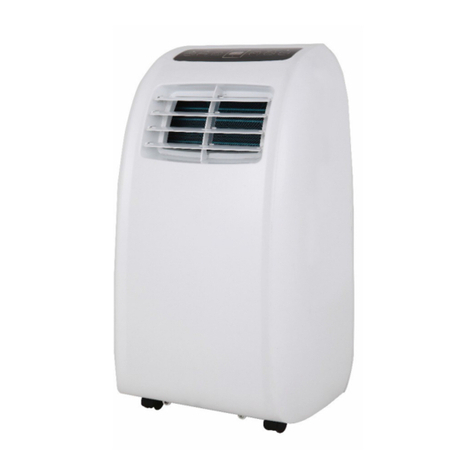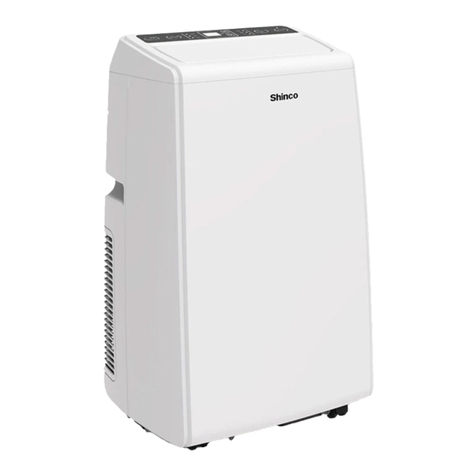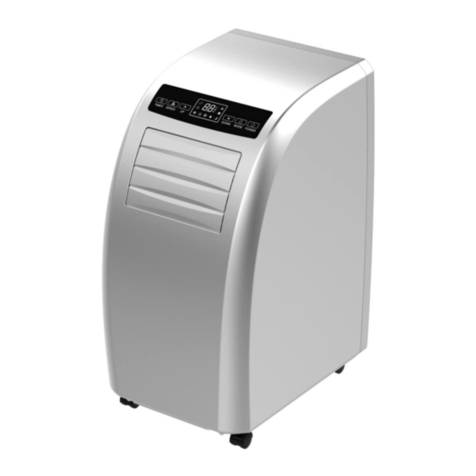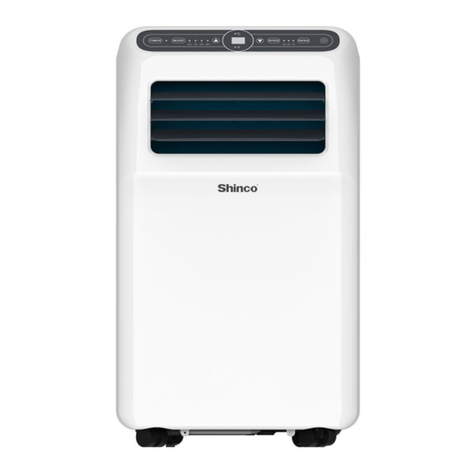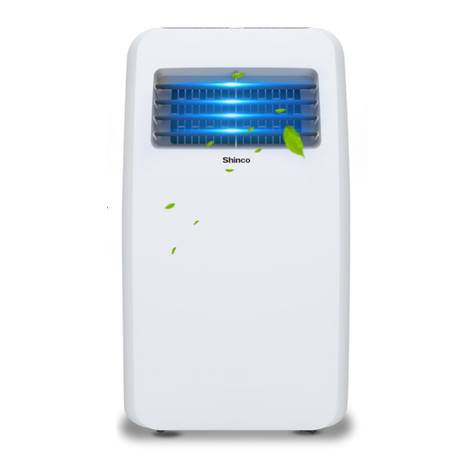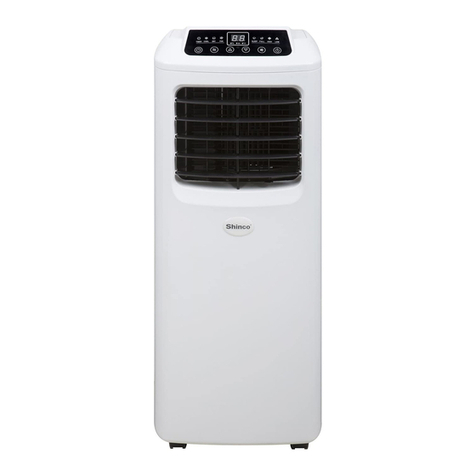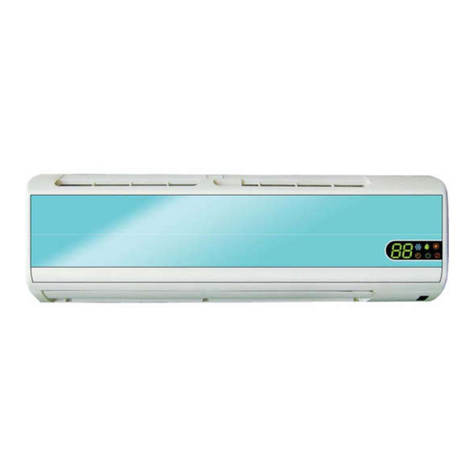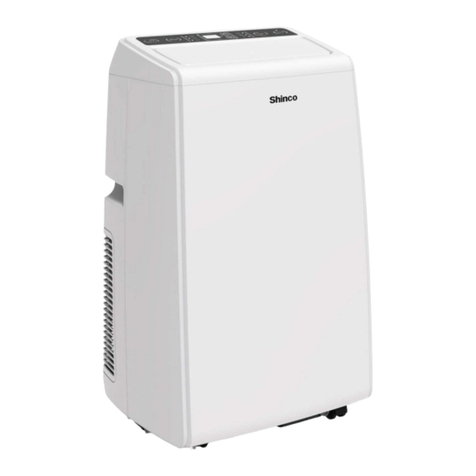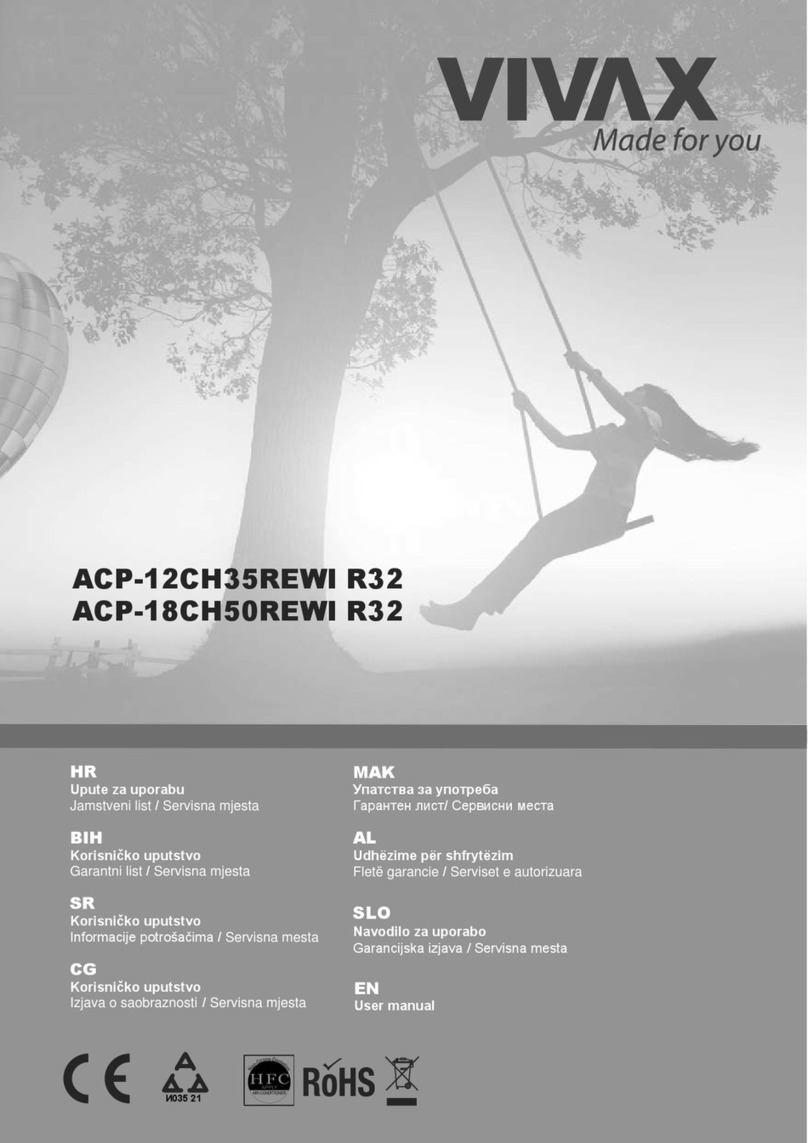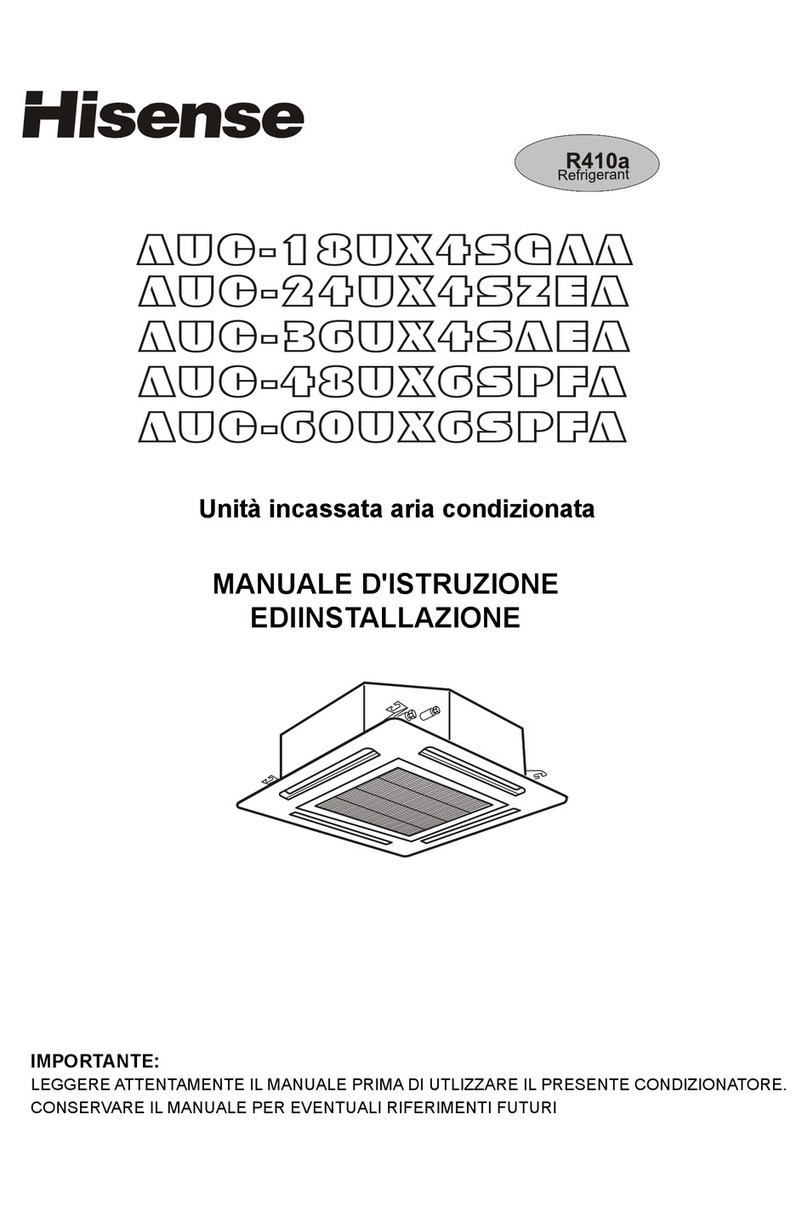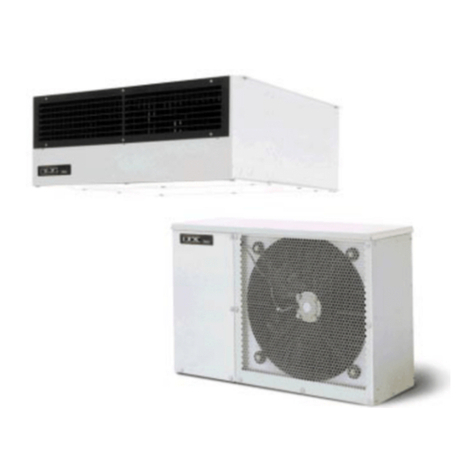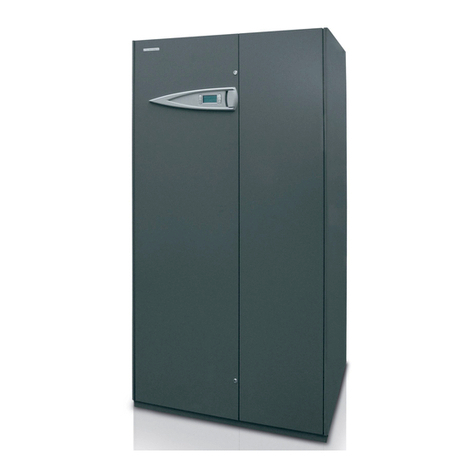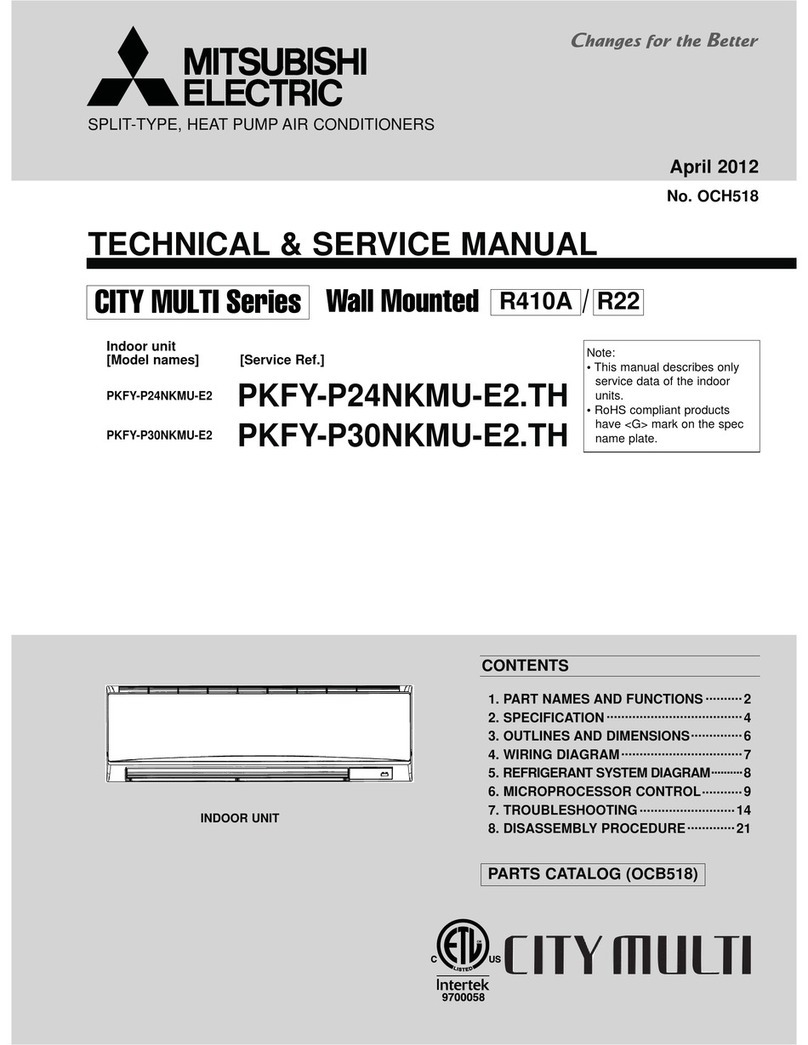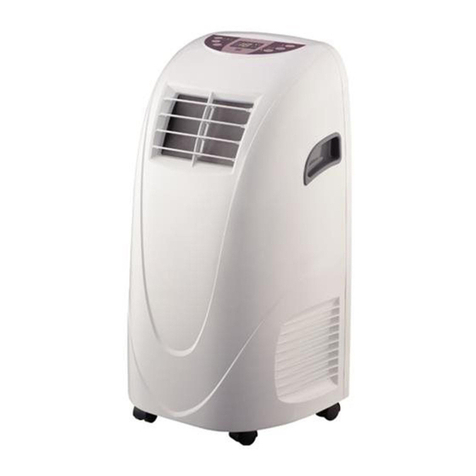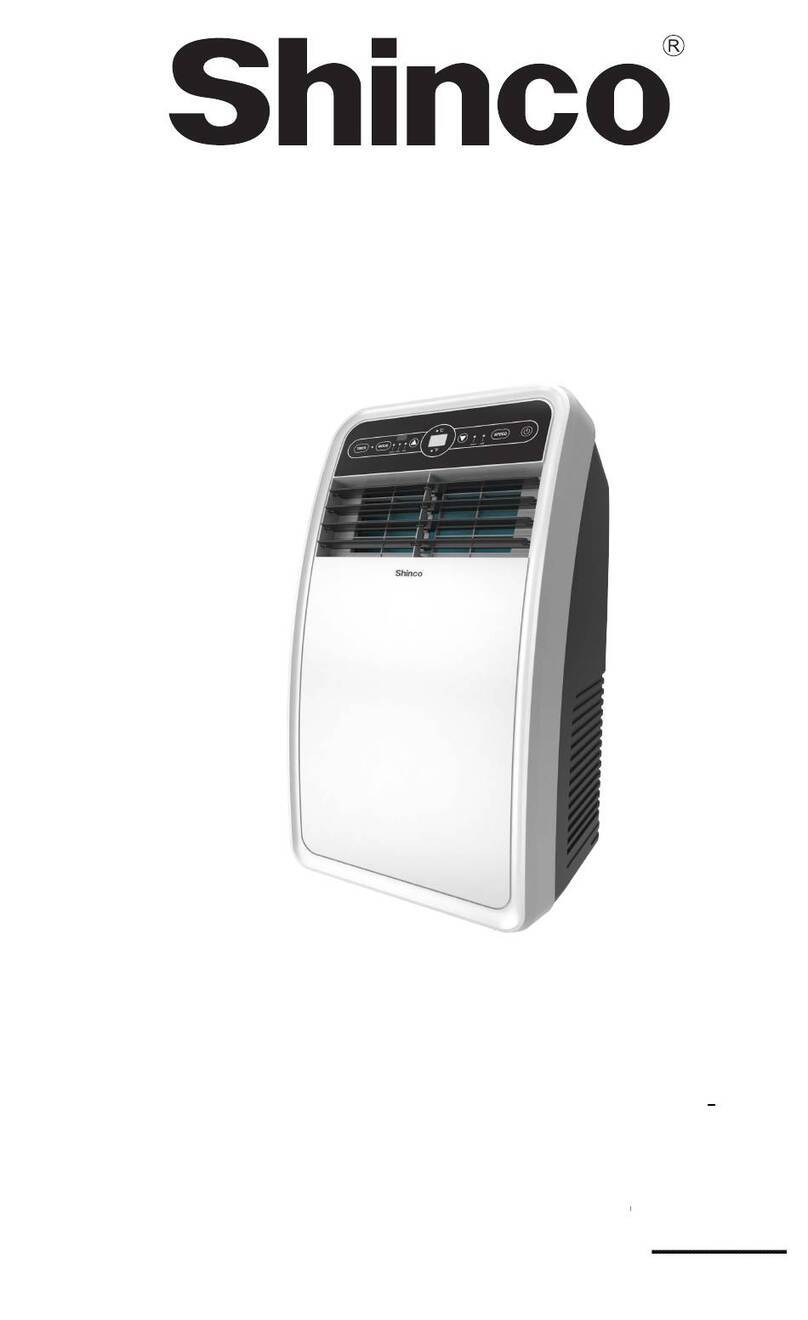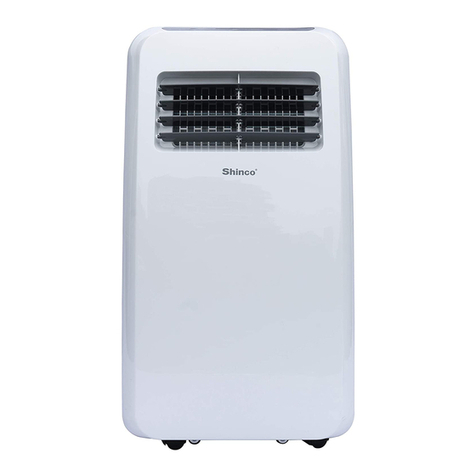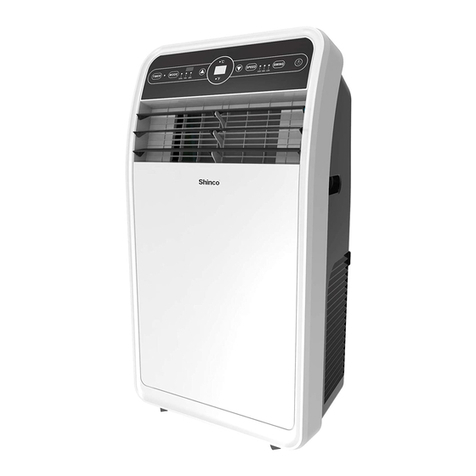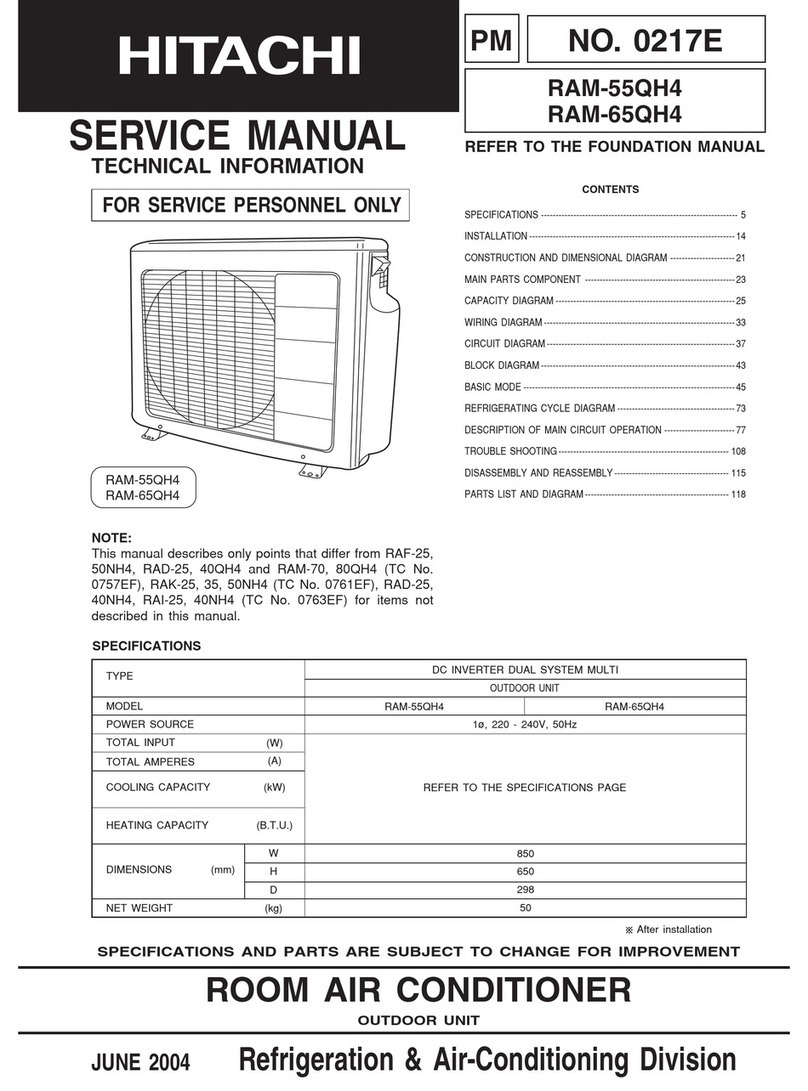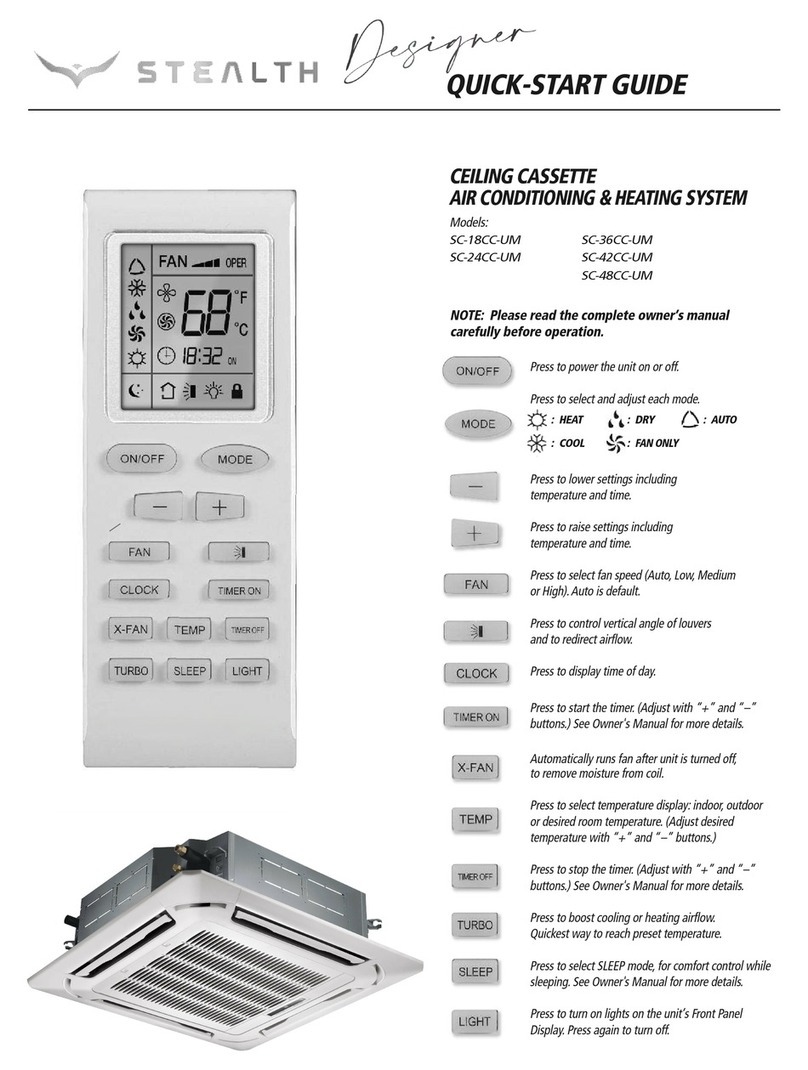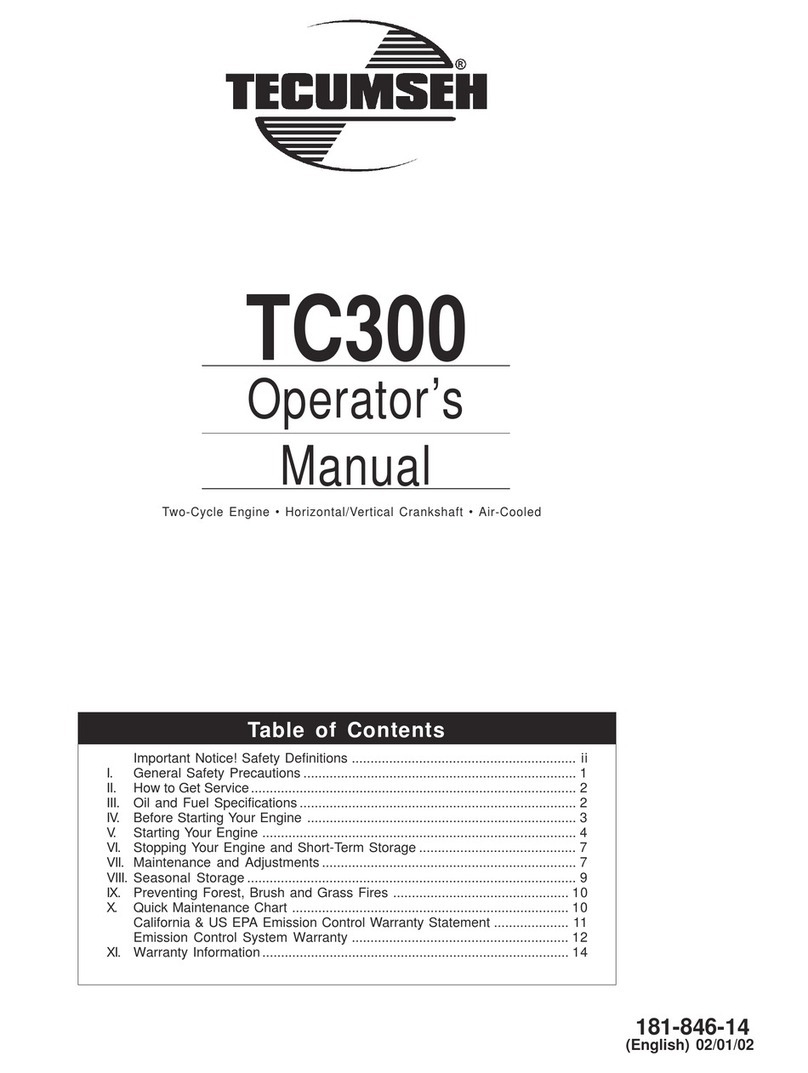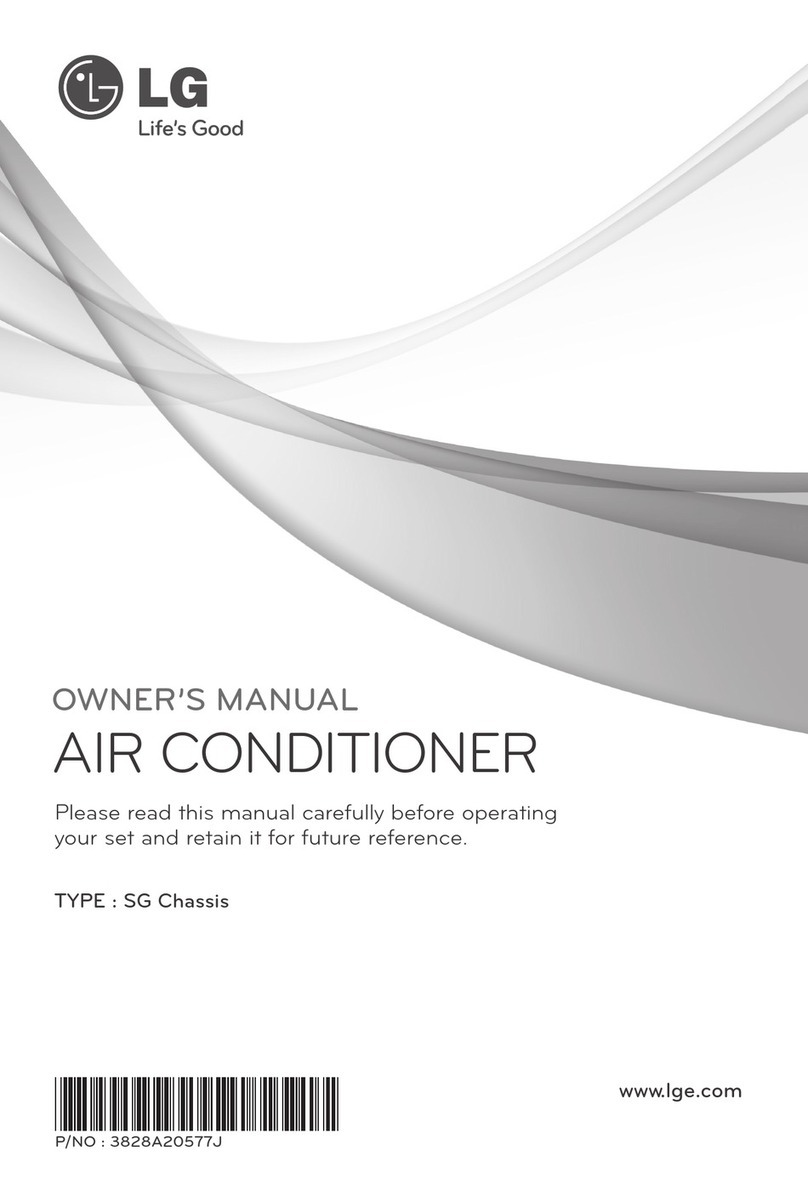
16. Decommissioning
Before carrying out this procedure, it is essential that the technician is completely familiar with the equipment
and all its detail. It is recommended good practice that all refrigerants are recovered safely.Prior to the task being
carried out, an oil and refrigerant sample shall be taken in case analysis is required prior to re-use of recovered
refrigerant. It is essential that electrical power is available before the task is commenced.
.
mechanical handling equipment is available, if required,for handling refrigerant cylinders;
.
all personal protective equipment is available and being used correctly;
.
the recovery process is supervised at all times by a competent person;
.
recovery equipment and cylinders conform to the appropriate standards.
a)
Become familiar with the equipment and its operation.
b)
Isolate system electrically.
c)
Before attempting the procedure, ensure that:
d)
Pump down refrigerant system, if possible.
e)
If a vacuum is not possible, make a manifold so that refrigerant can be removed from various
parts of the system.
f)
Make sure that cylinders is situated on the scales before recovery take splace.
g)
Start the recovery machine and operate in accordance with instructions.
h)
Do not overfill cylinders(no more than 80% volume liquid charge).
i)
Do not exceed the maximum working pressure of the cylinder,even temporarily.
j)
When the cylinders have been filled correctly and the process completed, make sure that the
cylinders and the equipment are removed from site promptly and all isolation valves on the
equipment are closedoff.
k)
Recovered refrigerant shall not be charged into another refrigerating system unless ithas been
cleaned andchecked.
17. Labelling
Equipment shall be labelled stating that it has been de-commissioned and emptied of refrigerant. The
label shall be dated and signed. For appliances containing flammable refrigerants, ensure that
there are labels on the equipment stating the equipment contains flammablerefrigerant.
18. Recovery
When removing refrigerant from a system, either for servicing or decommissioning, it is recommended
good practice that all refrigerants are removed safely.
When transferring refrigerant into cylinders, ensure that only appropriate refrigerant recovery cylinders
are employed. Ensure that the correct number of cylinders for holding the total system charge is available.
All cylinders to be used are designated for the recovered refrigerant and labelledfor that refrigerant (i.e.
special cylinders for the recovery of refrigerant). Cylinders shall be complete with pressure-relief value and
associated shut-off valves in good working order. Empty recovery cylinders are evacuted and,if possible,
cooled before recoveryoccurs.
The recovery equipment shall be in good working order with a set of instructions concerning the equipment
that is at hand and shall be suitable for the recovery of all appropriate refrigerants including, when applicable,
flammable refrigerants. In addition, a set of calibrated weighing scales shall be available and an in good
working order. Hoses shall be complete with leak-free disconnect couplings and in good condition. Before
using the recovery machine, check that it is in satisfactory working order, has been properly maintained and
that any associated electrical components are sealed to prevent ignition in the event of manufacturer if indoubt.
Page: 20/21




















